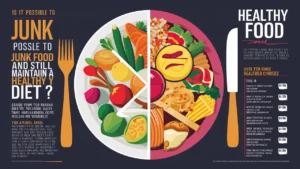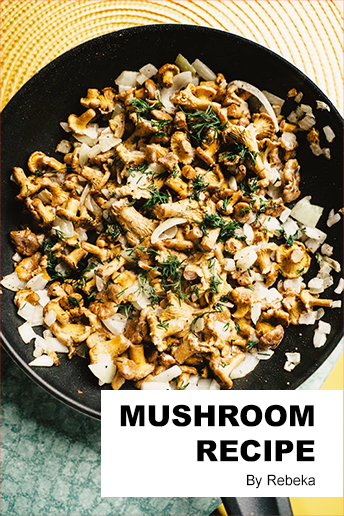- low calorie high fibre foods the perfect combo for healthy eating
- FAQ:
- 1. What are the benefits of incorporating fibre into a diet?
- 2. How many grams of fiber should one aim to consume daily?
- 3. Can you suggest some low-calorie high-fiber foods that are also nutritious?
- 4. How can high-fiber foods contribute to weight management?
- 5. What is the importance of including carbohydrates in a diet focused on low-calorie high-fiber foods?
- 6. Are there any breakfast recipes that are high in fiber but low in calories?
- Conclusion
low calorie high fibre foods the perfect combo for healthy eating
Eating a diet rich in low-calorie, high-fiber foods is the perfect combination for achieving optimal health and wellness. These nutrient-dense foods not only keep you feeling full and satisfied, but they also offer a range of benefits, from promoting better blood sugar control to supporting gut health and boosting energy levels. In this comprehensive guide, I’ll explore the power of low-calorie, high-fiber foods and how they can transform your overall well-being. Low-calorie, high-fiber foods are an essential component of a healthy diet because they provide essential nutrients and help you maintain a healthy weight. High-fiber foods help you feel full and satisfied, which can prevent overeating and aid in weight management. Additionally, fiber is important for digestive health, as it promotes regular bowel movements and helps prevent constipation.
Some examples of low-calorie, high-fiber foods include fruits, vegetables, whole grains, legumes, and nuts. These foods are also rich in vitamins, minerals, and antioxidants, which are important for overall health and well-being. For example, fruits and vegetables are packed with vitamins C and A, which help boost the immune system and protect cells from damage.
Whole grains like brown rice, quinoa, and oats are high in fiber and provide sustained energy throughout the day. Legumes such as beans, lentils, and chickpeas are also excellent sources of fiber and protein, making them a great addition to a balanced diet.
Nuts are another great low-calorie, high-fiber food that provides healthy fats, protein, and fiber. They make a convenient and satisfying snack option that can help curb cravings and keep you feeling full between meals.
Incorporating these low-calorie, high-fiber foods into your daily diet can have numerous benefits for your health and well-being. From weight management to improved digestion and increased energy levels, these nutrient-dense foods can help you feel your best and support your overall wellness.
Overall, focusing on a diet rich in low-calorie, high-fiber foods is a simple and effective way to improve your health and well-being. By choosing these nutrient-dense options, you can nourish your body with essential nutrients, support your digestive system, and maintain a healthy weight. So, start incorporating more fruits, vegetables, whole grains, legumes, and nuts into your meals to reap the benefits of a balanced and wholesome diet.
Key Takeaways
- Incorporating low-calorie, high-fiber foods into your diet can promote better blood sugar control and support gut health.
- Nutrient-dense foods like avocado, chia seeds, oats, black beans, hummus, quinoa, lentils, broccoli, and spinach are excellent sources of fiber and other essential nutrients.
- A diet rich in high-fiber foods can aid in weight management and provide a range of health benefits, including reduced risk of heart disease and diabetes.
- Combining low-calorie and high-fiber foods is a powerful strategy for achieving healthy eating and overall well-being.
- Incorporating more fiber into your daily routine can be done through careful meal planning and by including high-fiber snacks.
Understanding the Importance of Fiber
Fiber is a crucial component of a healthy diet, playing a vital role in maintaining our overall well-being. As a type of carbohydrate that the body cannot digest or absorb, fiber is found in a wide variety of plant-based foods, including fruits, vegetables, whole grains, legumes, and nuts. Understanding the different types of fiber and their benefits is essential for incorporating more of this essential nutrient into our daily routines.
What is Fiber and Why Do We Need It?
Fiber is broadly classified into two main categories: soluble fiber and insoluble fiber. Soluble fiber, such as that found in oats, barley, and legumes, dissolves in water and helps to regulate blood sugar levels and lower cholesterol. Insoluble fiber, on the other hand, like the kind found in whole wheat, vegetables, and nuts, does not dissolve in water and aids in promoting regular bowel movements and preventing constipation.
Consuming an adequate amount of both soluble and insoluble fiber is crucial for maintaining optimal gut health, as fiber helps to feed the beneficial bacteria in our digestive system. This, in turn, can improve nutrient absorption, reduce inflammation, and boost immune function. Additionally, a high-fiber diet has been linked to a lower risk of chronic conditions, such as heart disease, type 2 diabetes, and certain types of cancer.
The Benefits of a High-Fiber Diet
Incorporating more fiber-rich foods into your diet can provide a range of health benefits, including:
- Improved blood sugar control and reduced risk of type 2 diabetes
- Enhanced heart health and reduced cholesterol levels
- Promotion of healthy weight management and successful weight loss
- Reduced inflammation and improved immune function
- Better nutrient absorption and overall gut health
- Decreased risk of certain types of cancer, such as colorectal cancer
By understanding the importance of fiber and making a conscious effort to include more high-fiber, low-calorie foods in your daily meals and snacks, you can take a significant step towards achieving optimal health and well-being.
Exploring Low-Calorie, High-Fiber Foods
Incorporating a variety of low-calorie, high-fiber foods into your diet is the key to achieving optimal health and wellness. These nutrient-dense foods not only keep you feeling full and satisfied but also offer a range of beneficial nutrients to support your overall well-being.
Fruits and Vegetables: Nature’s Fiber-Rich Gifts
Fruits and vegetables are prime sources of high-fiber, low-calorie foods that should be at the forefront of your diet. Broccoli, spinach, and other leafy greens are packed with fiber, vitamins, and minerals, making them excellent choices for a healthy, balanced meal. Avocado, berries, pears, and apples are also fiber-rich fruits that can satisfy your sweet cravings while providing a nutritional boost.
Whole Grains: A Powerhouse of Fiber
Incorporating whole grains into your diet is another easy way to increase your fiber intake without excessive calories. Quinoa, oats, and whole wheat are all excellent sources of high-fiber, low-carb goodness. These versatile ingredients can be used in a variety of dishes, from hearty salads to comforting soups and casseroles.
Rounding out your fiber-rich options, legumes like lentils and chia seeds are also excellent low-calorie, high-fiber choices that can be easily incorporated into your meals and snacks. By focusing on these nutrient-dense, fiber-rich foods, you can enjoy the benefits of a healthy, satisfying diet that supports your overall well-being.
low calorie high fibre foods the perfect combo for healthy eating
Combining low-calorie, high-fiber foods is the perfect strategy for achieving healthy eating and overall well-being. These nutrient-dense low-calorie high-fiber foods not only keep you feeling full and satisfied but also offer a range of health benefits that can positively impact your life.
Incorporating whole grains, lean proteins, and omega-3 fatty acids into your diet can help regulate blood sugar levels and support gut health. Broccoli, spinach, lentils, and quinoa are all excellent examples of low-calorie high-fiber foods that can be easily incorporated into your meals.
For a satisfying and nutritious snack, consider reaching for avocado, chia seeds, oats, black beans, or hummus with whole grain crackers or crunchy vegetables. These low-calorie high-fiber foods can help you manage your weight, control your blood sugar levels, and support your overall gut health.
By making low-calorie high-fiber foods a central part of your healthy eating plan, you can enjoy the benefits of a nutrient-dense diet that keeps you feeling energized and satisfied throughout the day.
Incorporating Fiber into Your Daily Routine
Incorporating more fiber into your daily routine doesn’t have to be a daunting task. With a little bit of meal planning and meal prep, you can easily incorporate high-fiber, low-calorie foods into your breakfast, lunch, and dinner throughout the day.
Meal Planning and Preparation Tips
Start by identifying high-fiber foods that you enjoy, such as whole grains, legumes, fruits, and vegetables. Incorporate these into your weekly meal planning and meal prep routine. Plan out healthy recipes that feature fiber-rich foods, making it easy to reach your daily fiber intake goal.
Snack Ideas for On-the-Go Fiber
When it comes to on-the-go fiber, having high-fiber snacks on hand can make all the difference. Some great options include chia seeds, oats, berries, nuts, and hummus with veggies. These easy recipes can provide a convenient way to boost your fiber intake throughout the day and keep you feeling satisfied.
FAQ:
1. What are the benefits of incorporating fibre into a diet?
Adding fibre to your diet can help with digestion, promote satiety, and support overall gut health. High-fiber foods are also known to aid in weight management.
2. How many grams of fiber should one aim to consume daily?
It is generally recommended to consume around 25-30 grams of fiber per day for optimal health.
3. Can you suggest some low-calorie high-fiber foods that are also nutritious?
Some examples of low-calorie high-fiber foods include avocado, chia seed, oats, and broccoli.
4. How can high-fiber foods contribute to weight management?
High-fiber foods are often low in calories and can help you feel full for longer periods, which can aid in controlling appetite and managing weight.
5. What is the importance of including carbohydrates in a diet focused on low-calorie high-fiber foods?
Carbohydrates are essential for providing energy, and choosing carbohydrate-rich whole foods can complement a low-calorie high-fiber diet effectively.
6. Are there any breakfast recipes that are high in fiber but low in calories?
You can try oatmeal with chia seeds
Conclusion
Incorporating a high-fiber diet rich in low-calorie, nutrient-dense foods is the perfect combination for achieving optimal health and wellness. These versatile, fiber-packed foods not only keep you feeling full and satisfied, but they also offer a range of benefits that can transform your overall well-being. From promoting better blood sugar control and supporting gut health to aiding in weight management and boosting energy levels, these low-calorie, high-fiber foods are truly the powerhouses your body needs to thrive.
As you continue on your journey to a healthier, more balanced lifestyle, I encourage you to explore the vast array of low-calorie, high-fiber options available and incorporate them into your daily routine. Whether it’s starting your day with a fiber-rich breakfast, snacking on crunchy vegetables and hummus, or enjoying a satisfying lentil-based meal, these nutrient-dense foods will become your allies in achieving your health and wellness goals.
Remember, small steps towards a high-fiber, low-calorie diet can lead to significant improvements in your overall well-being. By making mindful choices and embracing the power of these nutrient-dense foods, you’ll be on your way to a happier, healthier you. Embrace the fiber-filled goodness and unlock the path to a life filled with vitality, balance, and optimal health.


 Is it Possible to Eat Junk Food and Still Maintain a Healthy Diet?
Is it Possible to Eat Junk Food and Still Maintain a Healthy Diet?









June 12, 2024 at 1:22 pm[…] grain is packed with essential vitamins, minerals, and antioxidants, making it a highly nutritious addition to any meal plan. Sorghum is particularly rich in fiber, protein, and a variety of […]